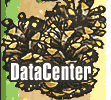The South Green, located within the South Green National Register Historic District, is a 1.4 acre triangular greensward in a dense urban neighborhood bounded by Main Street on the east and west and Wyllys Street on the South. Main Street on the east continues south of the green as Wethersfield Avenue. All the streets surrounding the green are heavily traveled, four-lane highways. It is fenced on all sides; on the west with a remnant of the cast iron fence that was put up in 1869 and on the east and south with a 3 foot tall chain-link fence.
Near the east and west edges is a concrete path. It connects on the south with a paved area. Just inside the paths are a few large trees. Low shrubs and annual flower bed are planted near the paved area. Benches provide seating near the bus stop at the northern tip, along the paths and near the paved area. There are several modern park lamps within the green in addition to street lights.
Although these buildings were constructed between the early-19th to the early-20th century, a period when there was great variety in building types and styles, the streetscape is surprisingly cohesive. This is due to several factors. They are all built of masonry, generally brick; they are all large buildings; and they are densely packed around the green. Three and four story apartment buildings constructed between 1870 and 1920 predominate. Many of these buildings have commercial store fronts which are vacant, as are the apartments on the upper floors. Also noticeable is the South Park United Methodist Church on the east side of the green. While it is well-maintained, many of the buildings around the green are not. The neighborhood has undergone serious disinvestment over the past years, symbolized by the vacant apartment buildings and the conversion of the Henry Bernard House (1807), a National Historic Landmark, into transitional housing.






![]()